Dare County takes a step toward federal funding for beach nourishment in Rodanthe
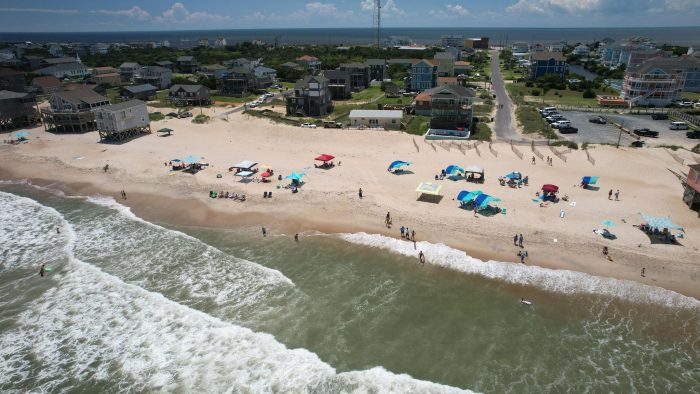
The Dare County Board of Commissioners (BOC) took an initial step toward seeking federal funding for a beach nourishment project in Rodanthe at their monthly meeting on Monday evening, July 17.
Per communications with Congressman Greg Murphy, who represents North Carolina’s 3rd congressional district in the U.S. House of Representatives, a feasibility study by the U.S. Army Corps of Engineers must be performed for the Rodanthe shoreline before federal funding can be officially requested.
“Erosion is a serious issue that I have witnessed first-hand during my visits to Dare County. It is an unfortunate reality that our beautiful beaches are constantly being whittled away. As much as I wish there was a simple way to address this issue, there is a required process to follow,” reads a letter from Congressman Greg Murphy to Chairman Bob Woodard dated June 16. “As you know, a feasibility study must be conducted by the U.S. Army Corps of Engineers before a beach nourishment project in the Village of Rodanthe can be undertaken… Per the Water Resources Development Act of 1986, half of the cost of the study must be incurred at the state and local levels.”
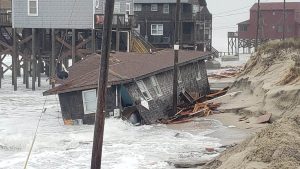
“We’ve been talking about beach nourishment in Rodanthe for a while,” said County Manager Bobby Outten at Monday’s meeting. “We made a presentation to the community back in January and told them the situation of our [county] funds, and that we weren’t in a position to fund it, but that [we’d] be looking for funding sources.
“As a result of that, Congressman Murphy has begun a process to start a feasibility study by the Corps of Engineers. To do that Corps of Engineers study, they have to have a commitment from a local government entity or someone to pay for a cost share of 50%.”
The estimated cost for a Corps of Engineers feasibility study is $3 million, and the Board agreed to allocate up to $1.5 million from the Beach Nourishment Fund for the study at Monday’s meeting, but this doesn’t necessarily mean the county will have to pay the full $1.5 million.
“It’s an incremental process, so for example, they would have to start with a cost-benefit analysis,” said Outten. “If they did that cost-benefit analysis and found that it didn’t meet the Corps’ formula for doing a beach nourishment project, then the project would end and all we would owe is half the cost of that [first part] of the study.”
Averaging 14 feet per year and as much as 20 feet in some sections of beach, Rodanthe has one of the highest erosion rates on the East Coast, and in recent years, it has accelerated. Homes that had many yards of beach out front when purchased several decades ago are now sitting at the edge of the surf. In the past year and a half, four oceanfront homes have collapsed, leaving behind massive debris fields that extended for miles along Hatteras Island.
Without an infusion of state or federal money, or enormous amounts of local tax revenue, the prospect of a new shoreline protection project for privately-owned properties will likely be impossible.
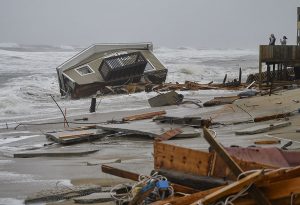
At the January 2023 public meeting, Outten outlined the challenges of a Rodanthe project based on a section of Rodanthe shoreline that was 2.25 miles long, and which would cost approximately $30-$40 million to nourish.
“We have about $6 million available to us [in the county’s beach nourishment fund] to put into a project somewhere,” said Outten at the January meeting. “So that fund is not going to fund beach nourishment anywhere in the county, and not in Rodanthe.”
“So, the question becomes, could we tax the people in Rodanthe enough to make up that money?”
As Outten outlined at the January meeting, even if a special tax district was created for every oceanside and soundside property in Rodanthe, (similar to the 2022 Avon project), the contribution would not be significant due to the small number of property owners.
“The tax base in Rodanthe is so small that it really won’t generate a significant amount of the costs – maybe a million dollars or less for what would be a $30 million project,” said Outten.
As a result, since January, the BOC, (as well as other county and state representatives), has reached out to connections within federal and state governments to generate a new source of funds for beach nourishment projects. Hence, the approval of the Corps of Engineers study.
“We could receive $40 million [in federal funds] if we’re successful,” said Outten on Monday.
Several Board members asked if the county could submit its own study, which would cost considerably less, but per Outten, the federal funding process had to incorporate a study performed by the Corps of Engineers. “We don’t gain anything by doing it on our own. There’s no other way to get the money from the federal government… If you’re going to do it, you’ve got to do it this way.”
A motion to approve up to $1.5 million from the Beach Nourishment Fund for the Corps of Engineers feasibility study was made by Vice Chairman Wally Overman and was seconded by Commissioner Danny Couch. The motion was approved, with the Board noting that they wanted the option to stop the study at any time, (based on the stages of data), in writing.
There is no timeframe for when the study will be conducted by the Corps, but it could take an estimated 3-5 years to complete, assuming a potential project passes all levels of scrutiny, starting with the cost-benefit analysis.
“If they just took the value of those houses that are in peril right now, it would be iffy if there is a cost-benefit that would work,” said Outten. “But if they take into account the impact on Highway 12, the impact on state roads, the impact on n the entire economy… If they take all that into account, it expands their cost-benefit analysis and it may be feasible.”
To view Monday’s BOC meeting in its entirety, click here.











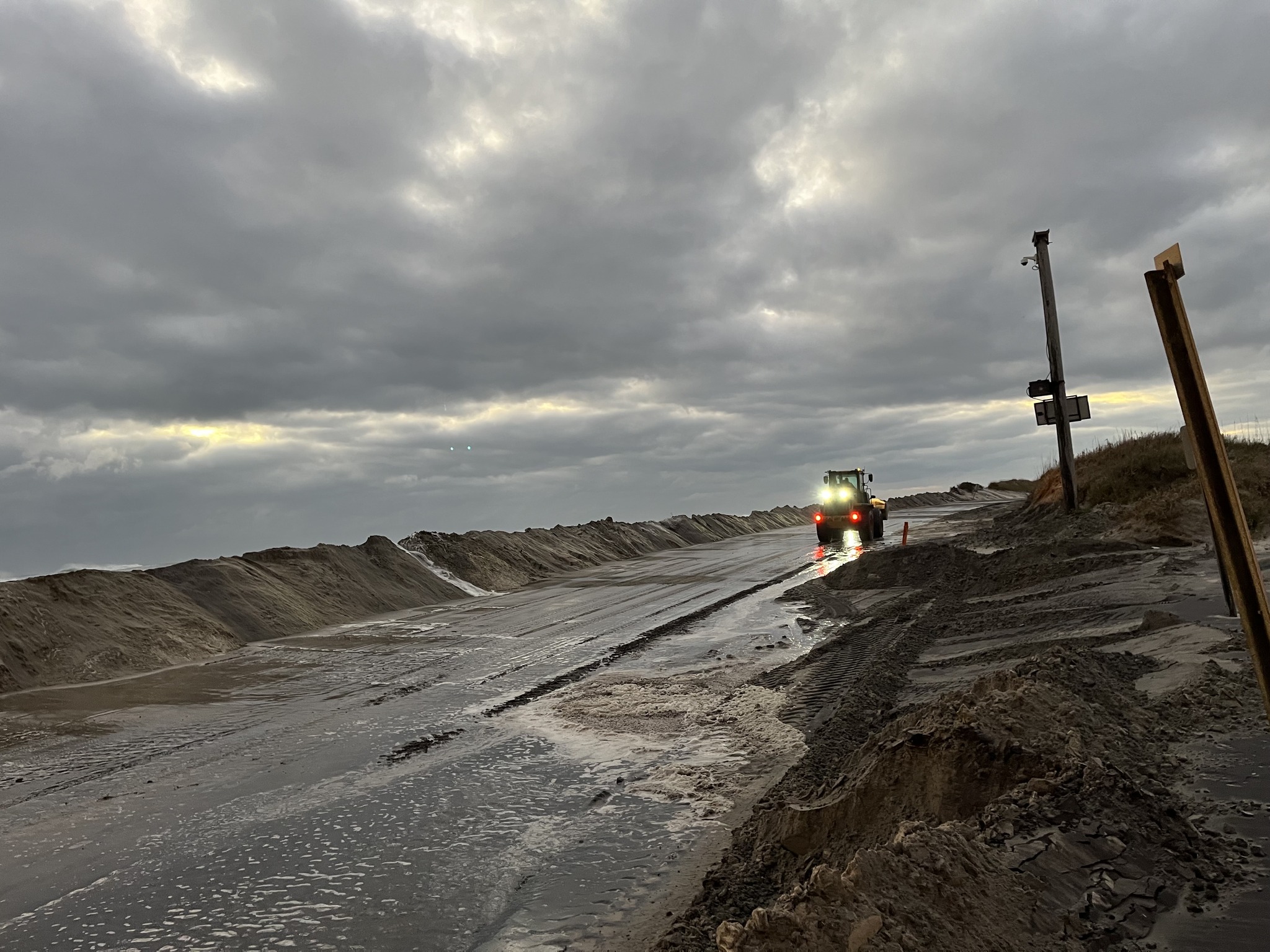
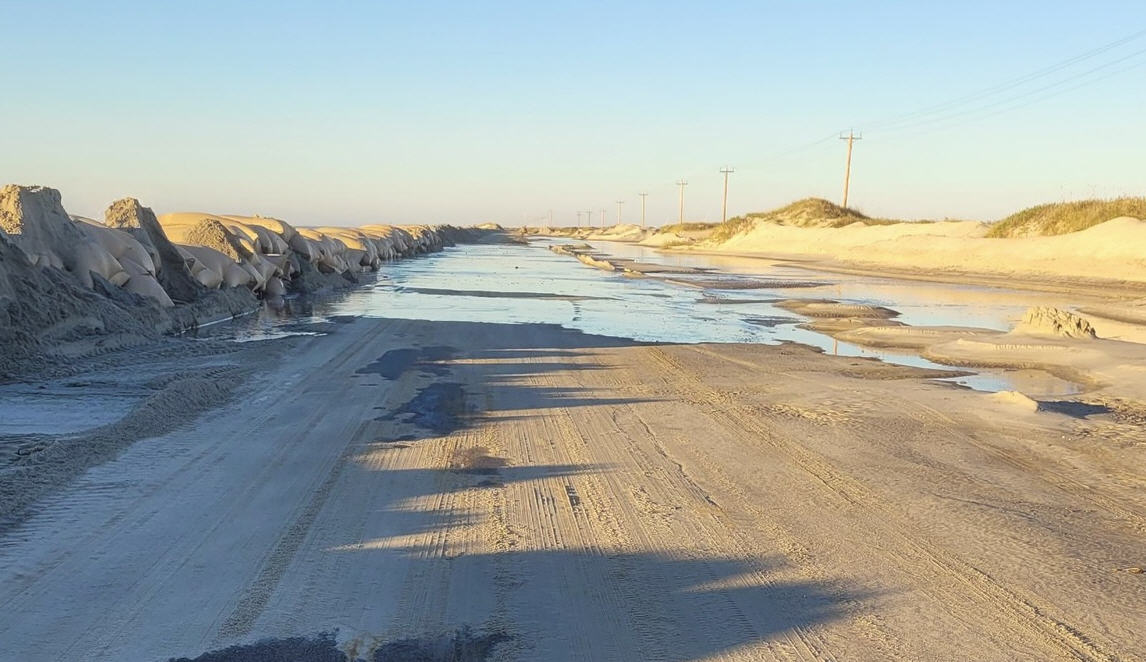



Wake up .,Sorry your efforts are fruitless
Do not spend 30-40 mil on sand that will be gone in 2 mos. For example: The most recent failure
Avon – Buxton replenishment project